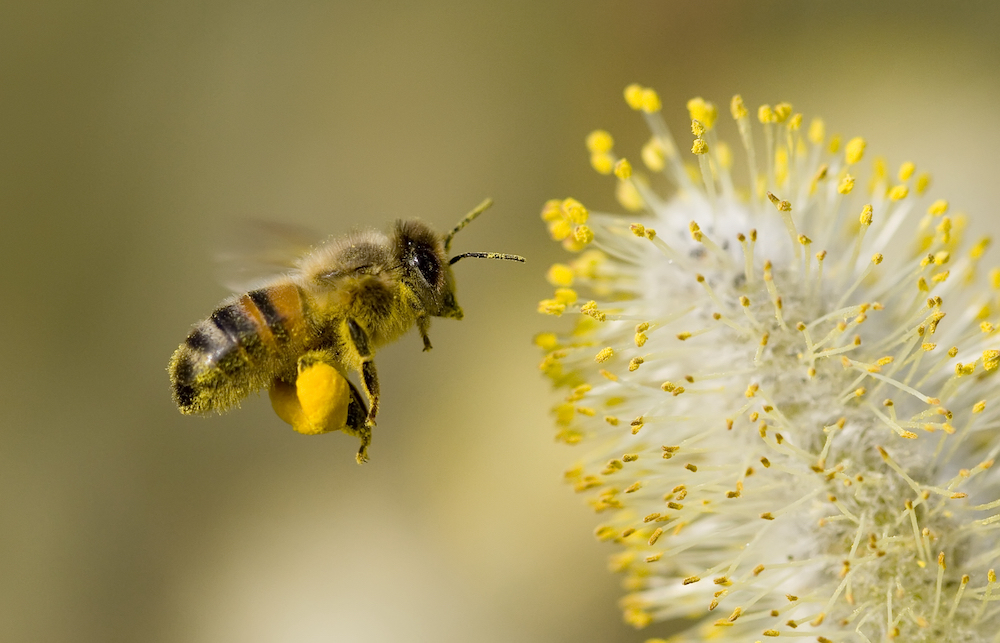What You Should Know About Bees and Pollen

We hear an awful lot about pollination when we’re talking about honey bees. But how much do you really know about why bees collect pollen and what they do with it? In this article, we are going to explore how bees collect pollen, what they do with the pollen and how pollen contributes to the success of the colony and the local ecosystem.
Why do honey bees collect pollen?
Did you know that pollen is the primary source of protein for a honey bee? It’s true! Since bees don’t eat other insects, they rely on pollen to provide them with the protein that bee babies need to help them develop quickly and grow the colony.
Honey bees are extremely active during their busy season in the spring and summer. All the worker bees play a specific role during this time, including foraging for food, caring for the larvae, cleaning and even playing the role of undertaker. An unfortunate result of their busy-ness is the fact that worker bees only live for about 6 weeks. This is why it is extremely important that honey bee larvae are taken care of. Without the constant development of new bees, the colony could not continue to survive and thrive.
Although we think of honey bees as one of the most prolific pollinators, pollination is actually just a side effect of their natural foraging tendencies. As honey bees visit flowers, they extract nectar and collect pollen to bring back to the hive. Some pollen sticks to their legs, wings and hair and falls off while they are visiting other flowers. This process aids in plant reproduction and is vital to the success of our local ecosystem. But, the funny thing is, honey bees probably don’t even know they’re doing it!
How do honey bees collect pollen?
Forager bees have the job of going out to collect food, including nectar and pollen. When she finds a flower, she will begin collecting food. During this process, the sticky pollen will naturally adhere to her body hair, legs, eyes and antennae. She will collect the pollen using her legs and store the majority of it in structures known as pollen baskets, also called corbiculae. The pollen is mixed with a bit of nectar and saliva and brought back to the colony. When the forger bee arrives at the hive, she drops off the pollen mixture in cells near the developing larvae.
Young worker bees consume this mixture called bee bread, and create a liquefied food that they can feed to the baby bees. This food source can also be given to the drones and the queen to provide them with the protein they need.
How do bees aid in pollination?
A flower has a male part and a female part. The male part is called the stamen. It is responsible for producing pollen. The female part is the pistil. The pistil is sticky and able to attract and collect pollen. Because flowers are not able to easily move where they want to go, they need help reproducing.
When bees land on a flower to collect nectar and pollen, some pollen sticks to their bodies. As they flit from plant to plant, some of that pollen will be distributed from the male part of one flower to the female part of another. Fertilization has just occurred, and now there is the potential for that flower to make a fruit.
As you can see, this process would be very challenging without the help of insects, birds and other critters such as honey bees, butterflies, hummingbirds and the many other pollinators that flowers rely on.
Pollen is vital for honey bee survival.
Pollen plays a much greater role in the life of a honey bee than just pollination. Pollen is the primary protein source for bees and provides the nutrition they need to grow a thriving and healthy colony. A beautiful side effect is the pollination process that helps flowers reproduce and develop seeds and fruits.
Would you like to learn more about pollen and the pollination process? Check out these articles from the D-Tek Live Bee Removal bee blog:
